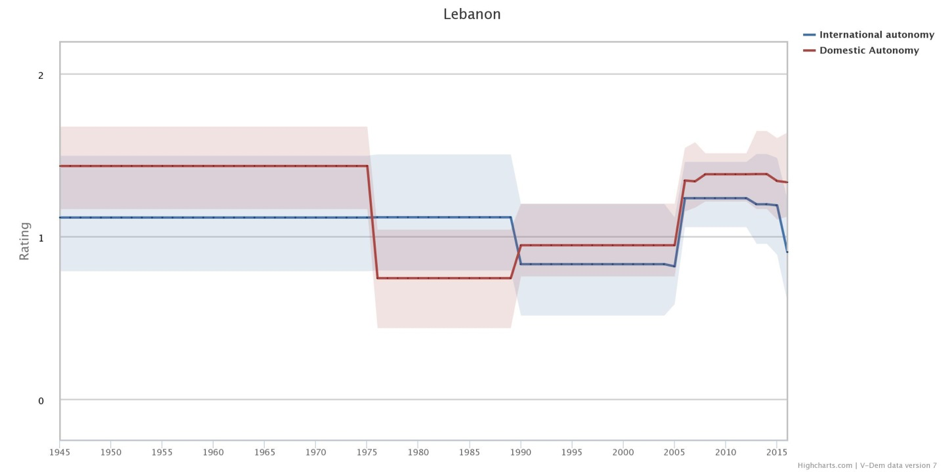Lebanon: ground up between Iran and Saudi Arabia?
By: V-Dem Staff
Nov 29, 2017
On 4 November, Lebanon’s Prime Minister Saad Hariri unexpectedly resigned from office, blaming Iran and the Shia militant group Hezbollah for destabilizing the country and seeking his life. However, observers believe that Hariri might have been abducted by Saudi Arabia and forced to say so. Is Lebanon becoming a playground for Saudi Arabia’s and Iran’s striving for regional predominance?
This week’s graph looks at Lebanon’s state of sovereignty since its independence in 1945. V-Dem’s domestic and international autonomy indicators capture the degree to which a country’s conduct of domestic and foreign policy is free from control of other states. In ascending order, the corresponding three point scale indicates a non-autonomous, semi-autonomous and autonomous status.
By looking at the graph, Lebanon’s chequered history and its fragile state of autonomy becomes apparent. Being right from the beginning partially vulnerable to foreign interference, the state of domestic autonomy grew even worse during the Lebanese Civil War in 1975-1990 when, among others, Syria, Israel and the PLO intervened. The following period from 1990-2005 marks the situation of restricted autonomy due to Syrian and Israeli occupation. Only after that could Lebanon regain some of its sovereignty, being however still plagued by the Iran-backed Hezbollah militia. Finally, V-Dem data points to renewed ambitions of intruders to take control of Lebanon’s foreign policy, possibly leading to the most recent events.
If you want to learn more about geopolitics in the Middle East, use our online analysis tools at v-dem.net.


